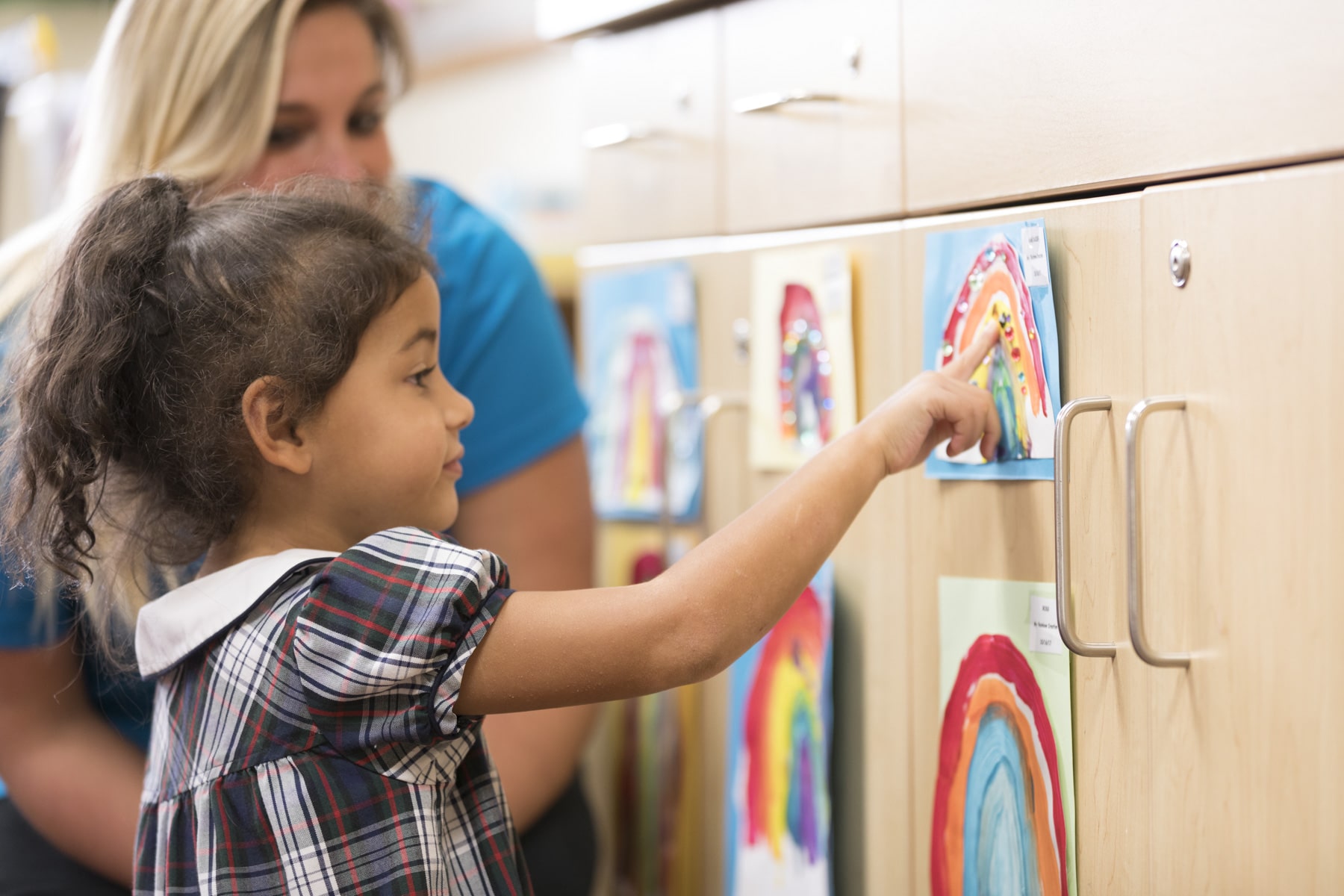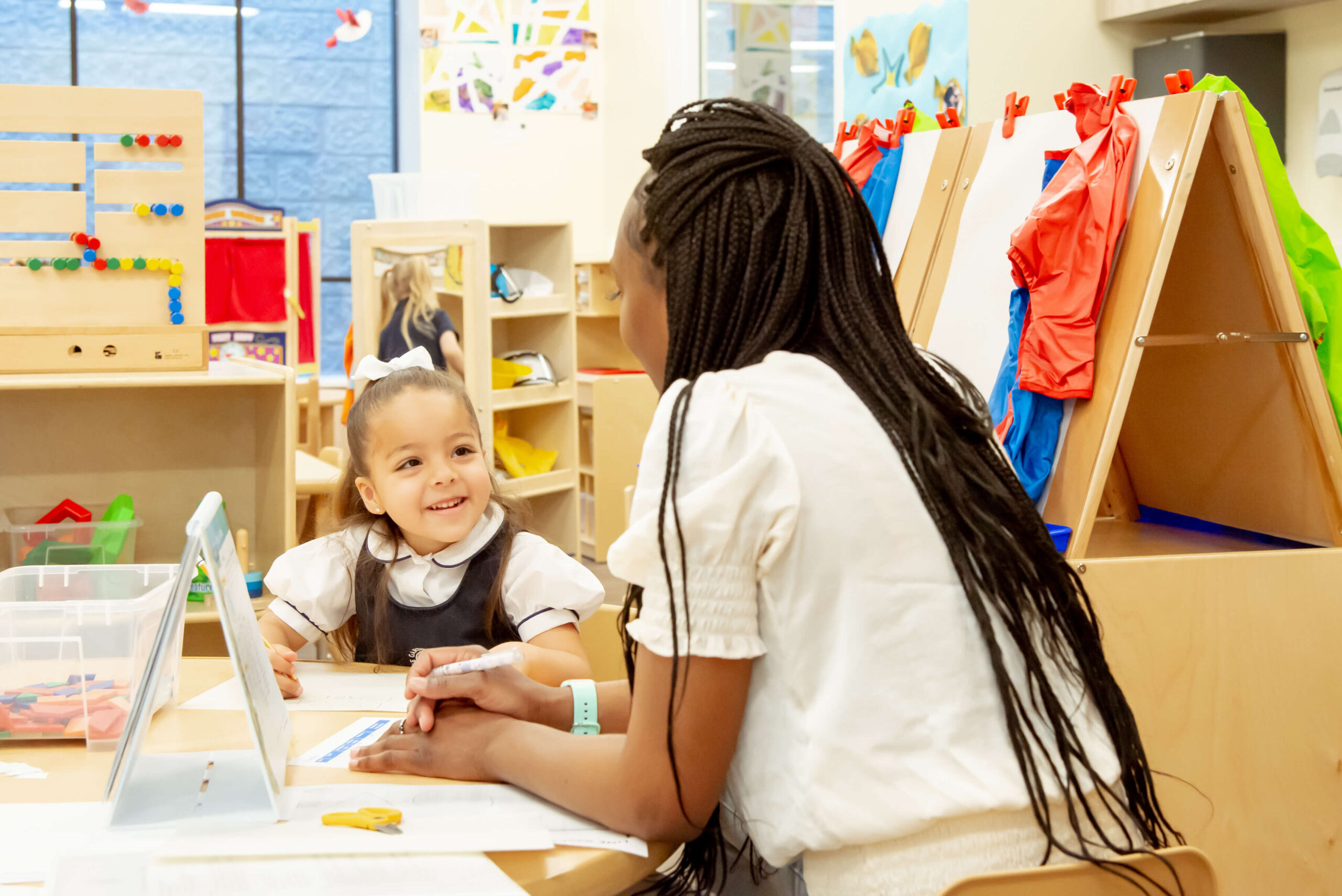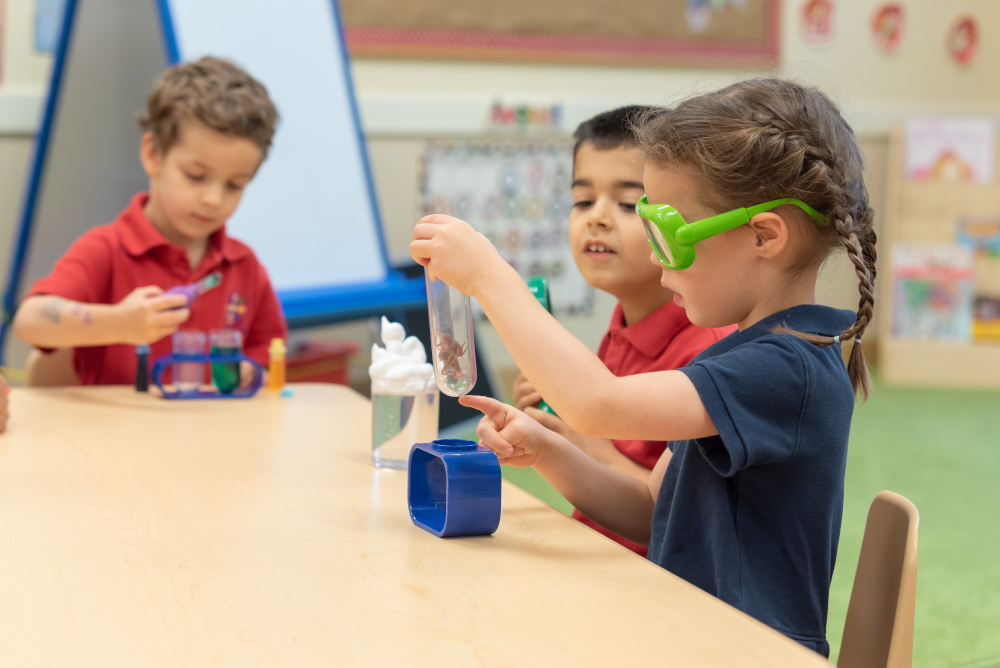
Our surroundings matter to us. When the spaces we inhabit are well-designed, clean, and pleasing, our mood and our productivity can both see a boost. Children are also affected by physical spaces. To create a supportive learning environment, The Gardner School is extremely intentional when designing preschool learning spaces and play spaces. We want to foster a space where students feel safe to be themselves, explore, learn, and grow.
While architectural design, lighting, and decoration are important, we also make it a point to display the art that our students create. There is no better decoration than art created by children. It brings warmth, energy, and authenticity to a space. Displaying a student’s artwork communicates to a child that they are seen, valued, and honored. If you’re trying to decide if you should add another piece of artwork to the fridge, consider the following reasons to display your child’s artwork:
Displaying artwork builds confidence.
In our classrooms, we intentionally display most artwork at the eye level of students. This allows them to see, share, and take pride in the work they and their peers have created. Being able to look up and see pictures and projects they’ve done in the past encourages children to keep learning and growing through new projects.
Displaying artwork supports spatial awareness.
Using a magnet, tape or other methods to display your child’s artwork can actually improve their spatial reasoning skills. When a piece of paper or a sculpture is hung or displayed, its positioning in space changes. Children will begin to grasp concepts like balance, symmetry, and orientation simply by helping you hang their artwork, (If you’re interested in further supporting your child’s spatial awareness, there are several activities that can help them build these key skills.)
Displaying artwork honors experimentation and process.
When teachers and parents display a child’s artwork, they’re sending a message that the artistic process is valued. As your child ages, they may express frustration that their artwork doesn’t look like an older child’s, a friend’s artwork, or even a parent’s drawings. Give their artistic experiments a place of honor by displaying the pieces where they took a creative risk or tried a new medium. When you hang it, explain that you’re showcasing this piece because it’s an example of their hard work and persistence. When it comes to learning something new, the many attempts that precede mastery are even more important than the final product. Displaying your child’s art can communicate that you value their engagement and experimentation.
Displaying artwork prioritizes creativity and aesthetics.
There’s a reason The Gardner School incorporates S.T.E.A.M. learning into our curriculum, not just S.T.E.M. concepts. It’s because that little A stands for art, and we think creativity is a practical and important skill to foster in preschoolers. Encouraging creative expression in children can lead to outside-the-box thinkers who can come up with innovative solutions or invent something entirely new. Arts education is an important part of our curriculum, and we show that by displaying the art that our students create. In addition to bringing color and beauty to our learning spaces, it shows children that their contributions are an important and necessary part of the learning process.
Supporting Children’s Creative Spirits
Art is an important pillar of the S.T.E.A.M. learning experience our students receive at The Gardner School. To learn more about our curriculum and classroom environment, we invite you to learn more about what we offer or schedule a tour at The Gardner School campus nearest you.



